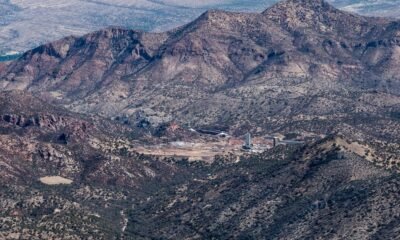environment
How ‘Dune’ Ignited Environmental Activism and Pioneered Ecological Science

“Dune,” often cited as a seminal work in science fiction, continues to shape the lens through which we view ecological challenges and innovation. Directed by Denis Villeneuve, the film adaptations, “Dune: Part One” (2021) and “Dune: Part Two” (2024), have reintroduced Frank Herbert’s narrative to a new audience.
Herbert’s vision extended beyond mere escapism; it grappled with pressing environmental concerns of his time. Written in 1963, “Dune” was conceived during a period marked by significant ecological fear, including the Cuban missile crisis and the influential publication of Rachel Carson’s “Silent Spring.” These events fueled public awareness about environmental degradation and ecological preservation.
The narrative resonates with contemporary audiences, addressing the urgent need to confront ecological crises. Herbert aimed to illustrate a world grappling with ecological disaster, where rampant industrialization and technological advancements threatened both the environment and humanity’s future.
Interestingly, Herbert’s understanding of ecology did not stem from formal education. His insights were influenced by the conservation practices of several Indigenous tribes of the Pacific Northwest. Two key figures in his life—Wilbur Ternyik, a descendant of Chief Coboway, and Howard Hansen, an art teacher and oral historian—shaped his ecological perspective.
Ternyik provided Herbert with firsthand knowledge of sustainable practices during an expedition through Oregon’s dunes. He detailed efforts to combat erosion caused by European colonization, demonstrating how Indigenous practices could restore damaged landscapes—a theme echoed throughout “Dune.”
Hansen introduced Herbert to influential ecological literature, such as Paul B. Sears’ “Where There is Life.” This text emphasized the importance of understanding the ecological consequences of human actions, a motif that became central to the narrative of “Dune.”
The Fremen, the desert-dwelling people of Arrakis, exemplify the fusion of ecological science and Indigenous wisdom, showcasing strategies for sustainable ecosystem management. Their struggle for survival in a harsh environment mirrors real-world challenges faced by many Indigenous communities today.
Leslie Reid’s 1962 work, “The Sociology of Nature,” significantly influenced Herbert’s approach to ecology. Reid’s examination of interdependence in ecosystems provided the conceptual foundation for the intricate relationships within Arrakis’s environment.
In “Dune,” the precious spice, produced from the desert’s unique ecosystem, becomes a metaphor for resource conflicts. This mirrors historical struggles over valuable resources, emphasizing humanity’s ecological impact.
Following its release, “Dune” resonated deeply with the burgeoning environmental movement. Herbert’s participation in the inaugural Earth Day in 1970 and the promotion of the novel in the Whole Earth Catalog underscored its thematic relevance to ecological activism.
Villeneuve’s cinematic adaptation has sought to illuminate these anti-colonial themes present in Herbert’s work, though some critiques suggest the films may overshadow the environmental critique. Future adaptations could further explore the ecological consequences presented in Herbert’s sequel, “Dune Messiah.”
The enduring legacy of “Dune” lies not only in its imaginative storytelling but also in its robust engagement with ecological issues, reminding us of the critical need for awareness and action regarding our planet’s future.


















